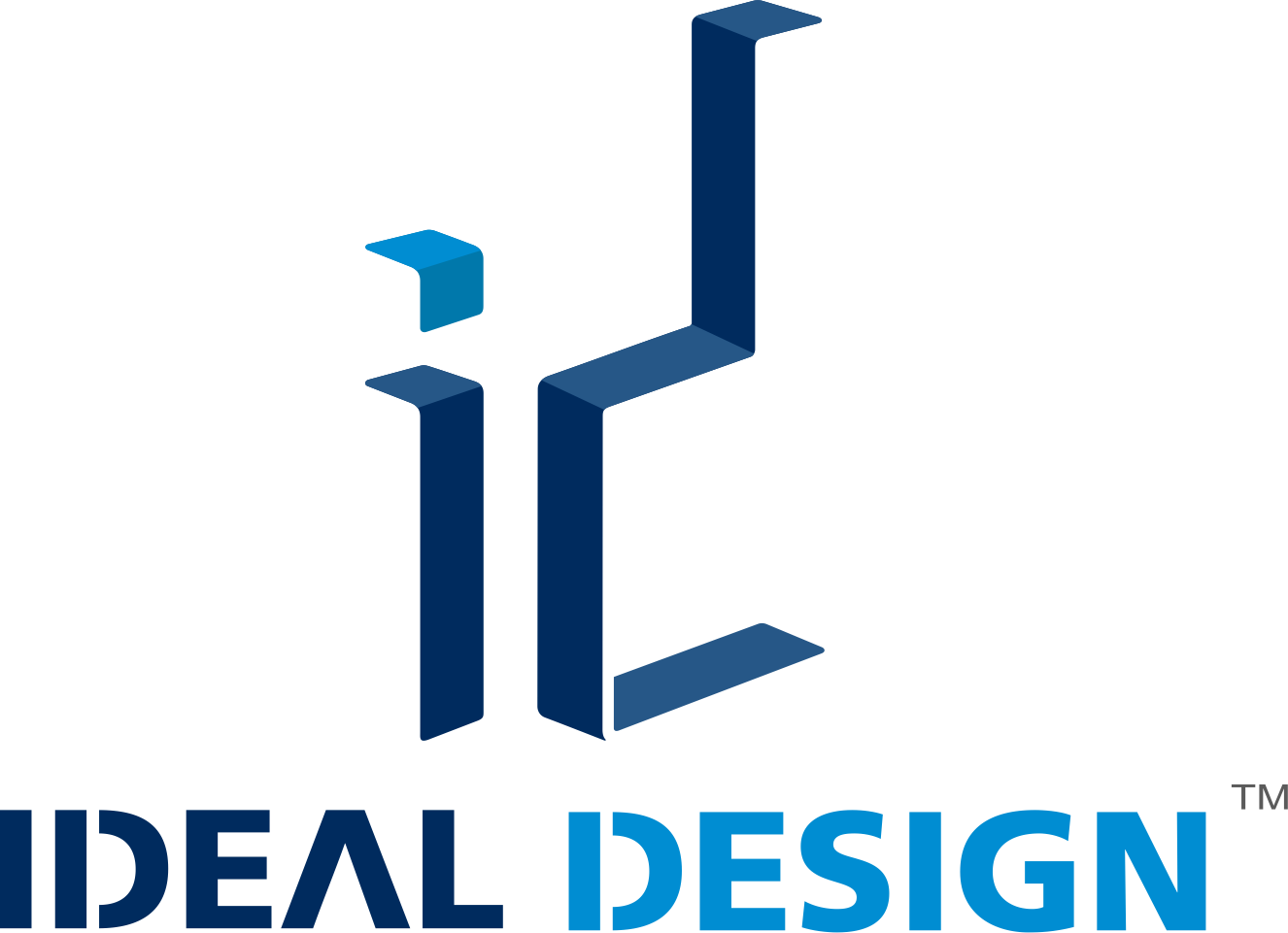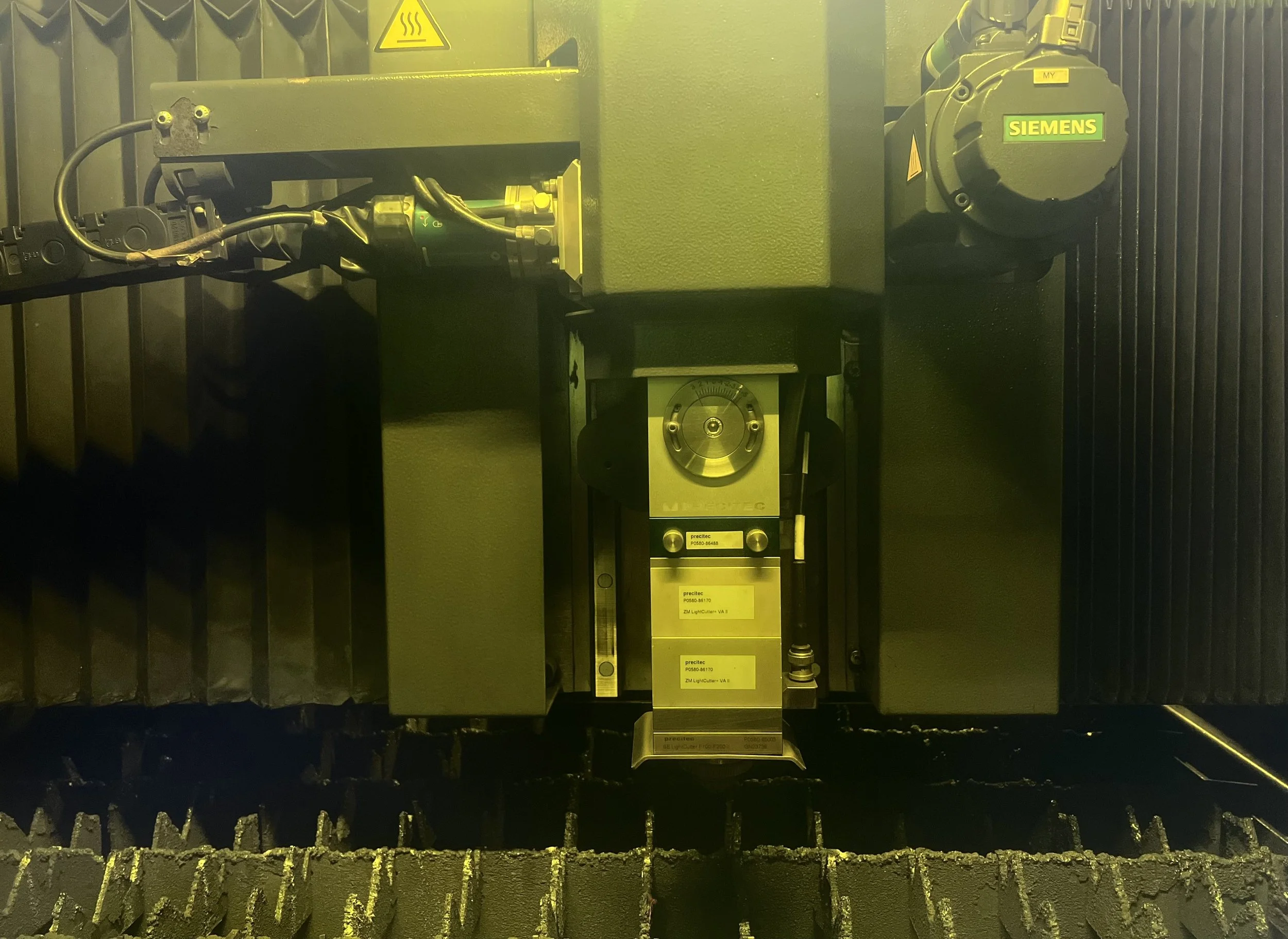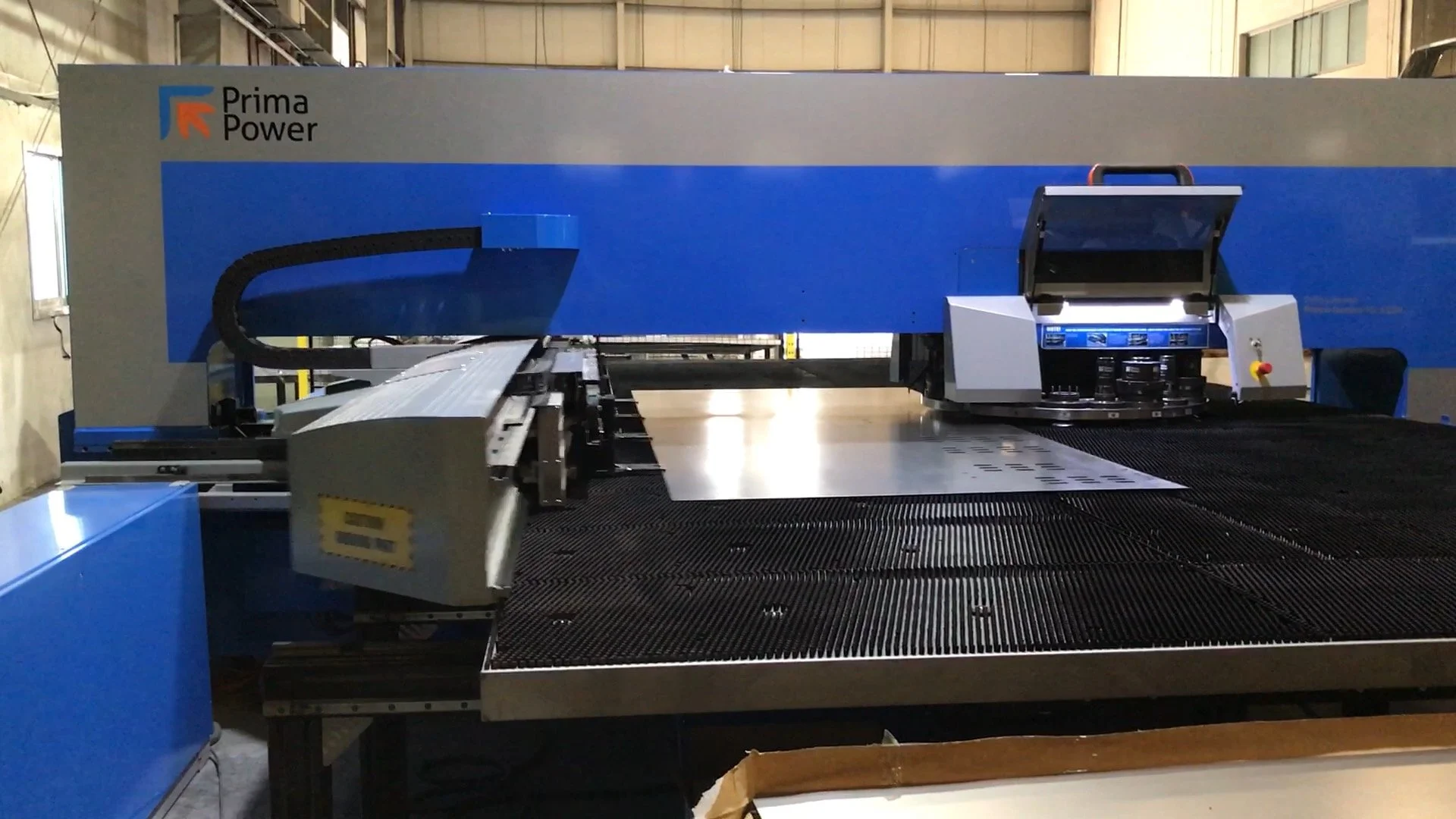CAD software allows engineers and designers to create detailed 2D and 3D models of sheet metal parts and assemblies. This digital approach replaces traditional manual drafting methods, providing a more accurate and flexible way to design complex shapes and structures. With CAD, users can visualize the final product, simulate its performance, and make necessary adjustments before any physical material is cut or formed.
Advanced Powder Coating Techniques: Elevating Metal Fabrication to New Heights
When it comes to manufacturing, embracing new and innovative processes not only sets a company apart but also significantly enhances the quality and durability of its products. In a world where speed and efficiency are key, technology is a biggest driver when it comes to improving processes and scaling them. One such process that is prudent in enabling efficiency and quality in our operations is powder coating. Utilizing a spectrum of advanced technologies, including an automatic wash booth, Wagner E-Line, and Vulcan catalytic curing ovens, we ensure that all of our fabricated products from enclosures to store furniture, stand the test of time.
The Powder Coating Process Explained
Powder coating transforms the surface finish of metal products, providing a superior coating that is both visually appealing and resilient. The process begins with a meticulous cleaning and preparation stage, where metal surfaces are stripped of all contaminants. Next, an electrostatically charged powder is uniformly applied to the prepared surface. The final step involves curing the coated product in a specialized oven, which melts the powder into a smooth, solid layer.
Innovative Technologies at Work
Our commitment to excellence in metal fabrication is highlighted by our investment in top-tier powder coating technologies.
Automatic Wash Booth: Moving from a manual wash station to a fully automated one has not only reduced manpower, but increased the speed at which we can coat parts. This technology ensures that every piece of metal is immaculately clean before coating, eliminating any dust, oils, or residues that could compromise the finish. Moreover, having an automated system ensures that parts are thoroughly and uniformly washed using multiple nozzles covering all faces of the product.
Wagner E-Line: We leverage the E-Line system's versatility to accommodate various substrates and coating requirements, delivering impeccable finishes every time. With a user-friendly interface and robust construction, the E-Line system seamlessly integrates into our operations, enhancing productivity and reliability. Moreover, its energy-efficient design aligns with Ideal Design's commitment to sustainability, minimizing waste and maximizing resource utilization.
Vulcan Catalytic Curing Ovens: The Vulcan catalytic curing ovens are the final piece of our advanced coating puzzle. These IR ovens mark a significant advancement in powder coating technology, offering energy efficiency, faster curing times, and uniform heat distribution compared to traditional ovens. These ovens not only reduce energy consumption and operational costs but also enhance productivity and ensure high-quality finishes.
Advantages and Impact
By integrating these sophisticated machines and technologies into our powder coating process, we not only gain a competitive edge but also elevate the quality of our products. These advancements contribute significantly to the sustainability of our manufacturing processes, reducing waste and energy consumption.
Our advanced powder coating technologies represent just one facet of our commitment to excellence in metal fabrication. By continually investing in innovative processes and equipment, we provide our clients with products that are not only aesthetically pleasing but also built to last. Explore our range of metal fabrication solutions and discover how we can bring unparalleled quality and durability to your projects.
How Laser Cutting is Transforming Manufacturing
If you’re in the manufacturing industry, you’ve probably heard about laser cutting, and for good reason. Boasting precision, speed, and versatility, it has quickly become a catalyst for growth and success in the manufacturing world. In the following paragraphs, we'll uncover exactly what makes laser cutting so special and its positive influence on the manufacturing sector.
Before we explore the topic in further detail, let's briefly take a look at the basics of laser cutting and the mechanics behind its functionality. In essence, laser cutting is a computer-controlled process that uses a high-powered laser beam to cut through materials. The laser beam, typically generated by a CO2 or fiber laser, follows a programmed path based on a CAD (Computer-Aided Design) file, resulting in a clean and accurate cut.
Laser cutting is all about precision and flexibility. With most systems capable of maintaining tolerances as tight as ±0.1 mm (0.004 inches), the final cut dimensions remain incredibly close to their intended measurements. The precision of laser cutting is largely determined by three key factors: the specific laser source employed, the superiority of the optics, and the exactness of the motion control mechanism, but we’ll uncover that further in another article. What’s most exciting is the way laser cutting is driving innovation across industries with its ability to execute complex geometries and intricate design details. The integration of laser cutting at Ideal Design has not only enabled us to handle greater production volumes, but also expand our project capabilities and improve turnaround. Imagine being able to produce highly customized products tailored to individual customer needs at scale – that's the power of laser cutting in action.
But it's not just about creating unique products; laser cutting is also revolutionizing the speed at which we develop them. Gone are the days of extensive prototyping and product development cycles. With laser cutting, designers and engineers can re-iterate designs quickly, test prototypes, and bring products to market faster than ever before. And let's not forget about the impact this has on supply chain efficiency. Laser cutting’s speed advantage enables manufacturers to accelerate production resulting in shorter lead times, increased productivity, and the ability to take on more projects.
Laser cutting is also perfectly positioned to drive the adoption of Industry 4.0 principles. By integrating with other advanced technologies like artificial intelligence and the Internet of Things, laser cutting is paving the way for smarter, more efficient, and more flexible manufacturing processes.
So what does all this mean for the future of manufacturing? As laser cutting continues to evolve and become more accessible, its potential to transform the industry will only continue to grow. Manufacturers who embrace this technology will be better equipped to stay competitive, innovate, and respond to the ever-changing demands of the market.
Exploring Welding Techniques for Sheet Metal Fabrication and the Role of Robotics
Welding is an important tool when it comes to fabrication. It offers the ability to join parts and assemblies through durable and strong bonds formed under high heat. Parts are melted together and allowed to cool, fusing them together. This blog delves into the various welding techniques tailored for sheet metal and highlights the innovative use of robotics in enhancing welding processes.
Main Types of Welding Used for Sheet Metal
TIG Welding: Tungsten Inert Gas (TIG) welding stands out for its precision, making it ideal for thin sheet metal. This technique involves using a tungsten electrode to produce the weld, offering control over the welding process and resulting in high-quality, clean welds.
MIG Welding: Metal Inert Gas (MIG) welding is favored for its speed and adaptability. Utilizing a wire feeding system, it’s efficient for both thick and thin sheet metal, making it a go-to for a variety of projects. Its ease of use also makes it popular among beginners and professionals alike.
Spot Welding: Spot welding is a process where metal sheets are fused together at specific points without affecting the entire piece. We commonly use this method for some of our enclosures, where it provides strong joints without compromising the integrity of the sheet metal.
Laser Welding: Laser welding offers unmatched precision and speed. By focusing a high-intensity laser beam on the desired point, it ensures clean and precise welds, especially beneficial for delicate or intricate sheet metal work. This method is known for its efficiency and minimal heat input.
Robotics in Welding Sheet Metal
The integration of robotics in welding sheet metal is transforming the manufacturing landscape. Robots bring a new level of precision, efficiency, and safety to welding operations. They can perform repetitive tasks with consistent quality, reducing human error and increasing productivity. Robotics also opens up possibilities for complex welds that are difficult or hazardous for human welders, enhancing the capabilities of modern fabrication processes.
The Future of Welding
As technology advances, selecting the appropriate welding method and embracing new technology can significantly enhance the quality and efficiency of sheet metal fabrication projects. Looking forward, the future of welding in sheet metal fabrication is bright, driven by advancements in technology such as automation, laser welding, and additive manufacturing. These innovations promise not only to enhance the efficiency and precision of welding processes but also to open new possibilities in design and fabrication, ensuring welding's continued indispensability in meeting the evolving demands of industry and innovation.
An Introduction to Press Brakes
CNC Punching: The Backbone of Metal Fabrication
CNC punching machines are integral to modern sheet metal fabrication, offering an unmatched combination of speed, accuracy, and versatility. From the precision and efficiency of servo-electric turret presses to the adaptability of auto-indexing stations, CNC punching continues to be a cornerstone in our industry.
















